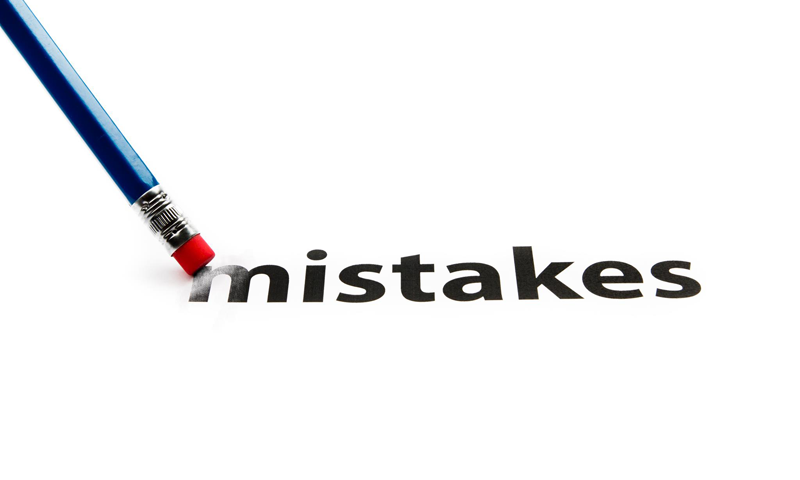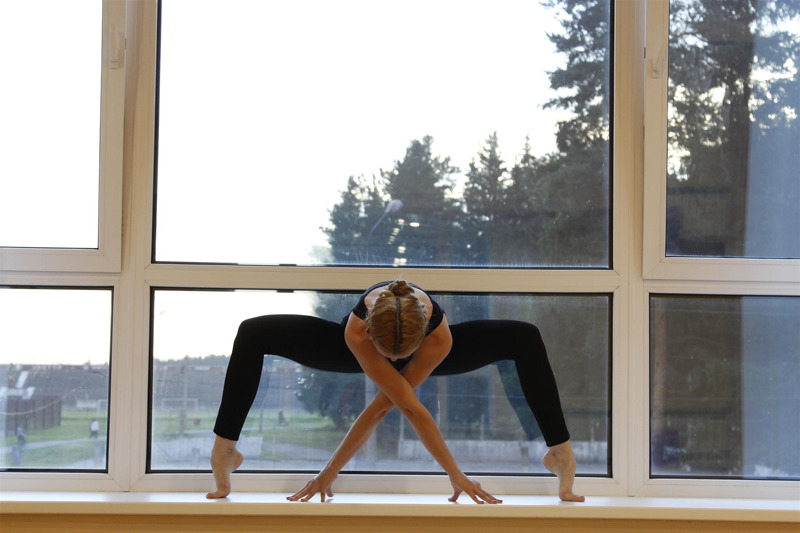
Yoga for Fasting
5th October 2018
How Yoga and Meditation Can Boost Your Creativity
12th October 2018Common Yoga Mistakes and How to Fix Them

Regardless of how experienced you are, no yogi is perfect. The great thing about yoga is that there is always something to improve. Whether you’re new to the yoga mat or you’ve been practising for years, many of us make at least one of these common mistakes. In this article, we explore the most common yoga mistakes and learn how to fix them.
Holding Your Breath
The first mistake many yogis make is holding their breath. When you are feeling stressed, your breathing may become short and shallow. For optimum results, it’s important to make your breathing long and deep when using yoga.
Unlike other types of exercise, yoga teaches us exactly how to breathe. Known as pranayama, this area of the practice focusses on breathing techniques to better our health. Better still, pranayama can be used alongside asana to improve the results. During a good yoga class, the instructor will include pranayama from the get-go. However, it’s best to get to grips with the simple techniques before trying more complex exercises. A good way to start is by syncing your breath with your movement. Not only will this help you to hold the posture, but it will also ensure you reap the maximum benefit. Using correct breathing releases stress and helps to connect your body and mind. Additionally, you can also use the breathing techniques off the mat. Having a stressful day at work? Calm yourself down with a few minutes of deep breathing.
Pushing Yourself Too Hard
While it’s great to challenge yourself, it’s important not to push yourself too hard. Yoga should never be painful. Before using complex asanas, you must understand the difference between pain and discomfort. During your practice, a small amount of discomfort is fine. If you’re stretching correctly, it’s completely normal for your muscles to feel a little uncomfortable. However, if this progresses into pain you should exit the pose immediately. Failing to do so could result in unnecessary injury. Not only will this be painful, but it will hinder your progress.
To avoid injury, don’t push your body into the pose if it feels too tight. Remember that it’s a work in progress, and with regular practice, you’ll soon be able to practice the pose completely. Until that point, ease yourself into the asana little by little. Each week, you should notice your flexibility increase.
Comparing Yourself to Others
Another common mistake is comparing yourself to others. It’s important to remember that yoga is not a competition. Your practice should be personal to you and you alone. It doesn’t matter what the person next to you can do, it matters what you can do. The best way to improve is by listening to your body, so try to focus on that as opposed to your classmates. If you focus on the people around you, you’re bound to leave the session feeling a little disheartened. It’s important to remember that you’ll get there in the end though, yoga truly is a work in progress.
Listen to Your Body
During your practice, remember to listen to your body. If you’re new to yoga, this may seem hard at first. However, with regular practice, it will become second nature. If it feels like you’re pushing yourself too far, you probably are! Don’t feel pressured to complete a pose just because other students can. As well as listening to physical sensations, take note of emotional sensations, too. Notice whether the posture makes you feel happy, stressed, or relaxed. If a certain pose doesn’t sit well with you, skip past it and move onto the next asana.

Becoming Dehydrated
While yoga is a low-intensity exercise, it’s still important to stay hydrated. This is particularly important during hot-yoga or intense vinyasa classes. Practised in a heated studio, hot yoga is known for its sweat-inducing nature. While it’s great for burning calories, you can quickly become dehydrated if you’re not careful. Rather than gulping down water during the class, it’s far more effective to top up on H2O prior to the session. For best results, drink a large glass of water 30 minutes before your practice. This way, you’ll be hydrated before you start working out.
Skipping Savasana
Savasana, or Corpse Pose, is the final resting pose of a yoga class. Some yogis enjoy this asana, while others find it difficult to practice. If you find it hard to lie still, have a hard time relaxing, or you’re pushed for time, Savasana can feel a little annoying. However, it’s often regarded as the most important pose of the practice. Giving you time to reflect on the session, Savasana is the perfect time to critique your performance and realise where you’d like to improve. Additionally, the posture induces a state of deep relaxation, allowing you to leave the session feeling stress-free.
Some yogis believe that Savasana is essential for absorbing the benefits of the class. If you skip this stage, all of your hard work may be wasted! If lying on your back is uncomfortable, speak to your teacher about modifying the asana. If you suffer from back pain, you may prefer to lie on your stomach, instead.
In Summary
Whether you’re an experienced yogi or a complete beginner, try to avoid making the mistakes above. For best results, it’s also important to wear the right clothing. If you’d prefer to change when you get to the studio, that’s fine! Pick up a spacious yoga bag to transport your gear to and from the session. To prevent dehydration, also pack your bag with a fresh bottle of water to sip on throughout the class.

